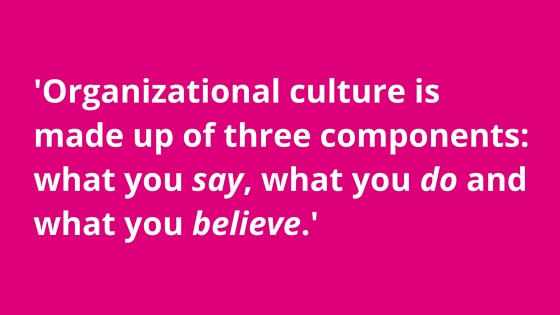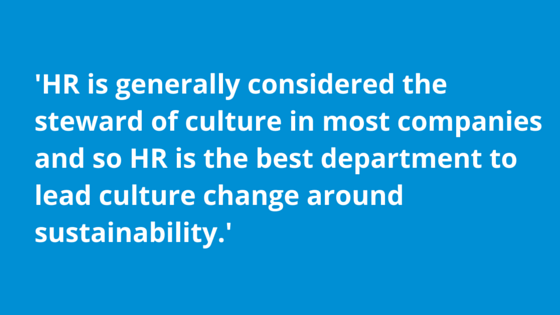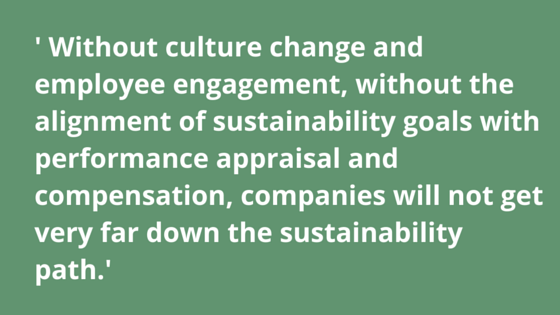Invisible Nature is a strong promoter of the relationship between HR and corporate sustainability performance. That is why we carried out this year the first study in Romania on the role of HR in building a sustainable company. An important source of inspiration for our work on this subject has been Andrew Savitz’s book ‘Talent, Transformation and the Triple Bottom Line’.
 Andrew Savitz is a renowned expert in sustainability, with more than 25 years of experience in helping corporations to become sustainability leaders. He is also the author of ‘The Triple Bottom Line: How the Best Run Companies are Achieving Economic, Social and Environmental Success and How You Can Too’.
Andrew Savitz is a renowned expert in sustainability, with more than 25 years of experience in helping corporations to become sustainability leaders. He is also the author of ‘The Triple Bottom Line: How the Best Run Companies are Achieving Economic, Social and Environmental Success and How You Can Too’.
We had the honour and pleasure to interview Andrew Savitz and discuss about how human resource professionals can embed sustainability into the core HR operations and drive sustainable business practices.
Ioana Tetelea: Could you tell us a little bit about your book 'Talent, Transformation, and the Triple Bottom Line'?
Andrew Savitz: The book shows how organizations can simultaneously create environmental, social and economic value, as measured by the Triple Bottom Line, and the role of employees and HR professionals. The book is written for human resource professionals and for corporate leaders who seek to get their organizations on the road towards sustainability.
Ioana Tetelea: In your opinion, what are the key HR roles when it comes to creating a sustainable business?
Andrew Savitz: HR has a number of key roles, including recruiting and hiring employees who understand the importance of sustainability, ensuring that performance appraisals and incentives take sustainability into account, and helping to motivate and engage employees to work on sustainability within the organization. Sustainability must also be part of training and leadership development.
One of the books’ major topics is the role of employee engagement. HR is often charged with understanding what motivates employees and how to get them to be more productive and engaged in their jobs. Sustainability can play an important role with that.
Ioana Tetelea: You talk in your book about the cultural changes that a company has to create in order to make room for sustainability. Why is the organizational culture so important for developing sustainable business practices?
Andrew Savitz: Organizational culture is made up of three components: what you say, what you do and what you believe. Many companies say they support sustainability and they also do things that support sustainability, but unless they also believe that sustainability will make a significant difference in their businesses, they will not make progress. For many companies, it is this lack of belief or clarity that holds them back.

BP was once considered a sustainability superstar and had very strong statements in support of safety with programs that supported those statements. Yet, employees in the refineries and on the oil rigs believed that production was more important than safety. This belief was one of the root causes of a decade of safety mishaps.
The point is that unless doing, saying and believing are all aligned in support of a corporate objective, it will not be easy to reach that objective. That’s true for safety and for other aspects of sustainability.
Ioana Tetelea: In Romania there are still many companies where there is a lack of commitment and leadership for sustainability at top management level. What actions could HR professionals undertake in this situation in order to advance sustainability?
Andrew Savitz: HR is generally considered the steward of culture in most companies and so HR is the best department to lead culture change around sustainability. Some companies hire consultants to conduct culture surveys and undergo formal cultural change processes. Whether you chose to do this or not, HR professionals can work to understand what senior management and line employees truly believe about the importance of sustainability. In many cases, with proper analysis, it is possible to understand who holds oppositional beliefs and why. Often, mid-level managers are the obstacles, because they are charged with, and compensated for, production and don’t see the big picture. Executive leadership can also be a roadblock. No matter. Once the underlying, oppositional beliefs are apparent it is often easy to make changes, if the business case for sustainability is made clear.

There is a good example in the book about an energy company that had a poor safety record, even though safety was the “number one” priority and even though the company had good safety programs. So it was saying and doing the right things, but not improving its safety record because everyone understood that safety was not as important as production and profit. This was the problem with BP and was a root cause of the Deepwater Horizon catastrophe.
In the energy company, HR led a program to expose the belief that production and profit mattered more than safety, no matter what was being said or done. Once this was made clear, the company began to take steps to change the belief. Step one was to bring the anti-safety belief out into the open so that people could see it. The company was then in a position to make positive change by putting in programs to change the belief.
The company went from one of the worst to one of the best in terms of their safety record. And the business results also improved. So did the trust in the company’s leaders, because now they were consistently saying, doing and believing that safety was the number one priority.
Ioana Tetelea: What do companies risk if they don’t start to involve HR departments in their sustainability initiatives?
Andrew Savitz: Without culture change and employee engagement, without the alignment of sustainability goals with performance appraisal and compensation, companies will not get very far down the sustainability path.
Ioana Tetelea: Could you give us an example of a company that, in your opinion, has managed to integrate sustainability into its core HR processes and improve its sustainability performance?
Andrew Savitz: General Electric has used its HR function as a major drive of sustainability. They train employees and leaders on sustainability and also make sure those executives and managers are compensated on that basis. They have also made sustainability part of their recruitment efforts and it has been a big help to them in terms of attracting the best and brightest candidates.
Ioana Tetelea: Starting 2017, a European Union Directive will require companies with more than 500 employees to report on their social and environmental impact. How do you see the role of HR in sustainability reporting?
Andrew Savitz: HR is responsible for many areas that are included in sustainability reporting. If you look at the Global Reporting Initiative, which is considered the leading format in the world for sustainability reporting, you find that many topics, from benefits and compensation, to employment conditions and employee well being, are within the purview of HR.
Ioana Tetelea: What would you say to a HR professional that is very skeptical about his or her role in building a sustainable company?
Andrew Savitz: I would say that they should read my book. There are many examples of HR professionals making a difference on sustainability within their organizations.













[…] Andrew Savitz, autorul cărții ,,Talent, Transformation and Triple Bottom Line”, vede cultura or… Sunt multe companii care spun că susțin principiile sustenabilității și care fac diverse lucruri în această direcție, însă Savitz consideră ca acest lucru nu este suficient dacă organizațiile nu cred că sustenabilitatea aduce o valoare semnificativă businessului lor. […]
[…] Savitz, expert in sustenabilitate din Statele Unite, într-un interviu pe care ni l-a acordat pentru blogul Invisible Nature, spunea că există 3 componente importante […]